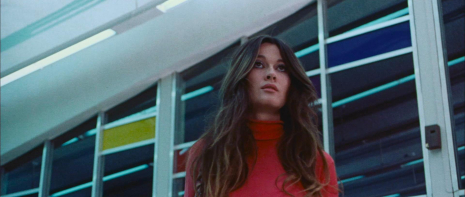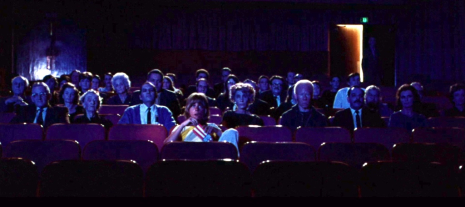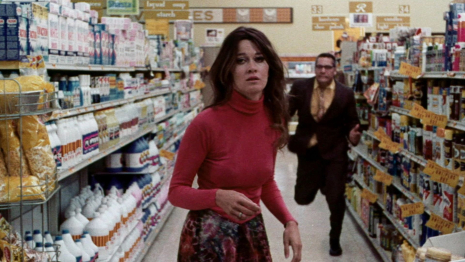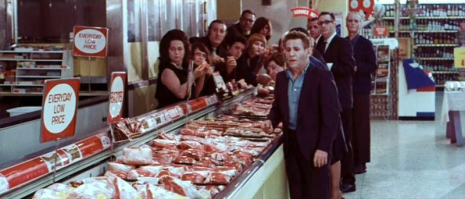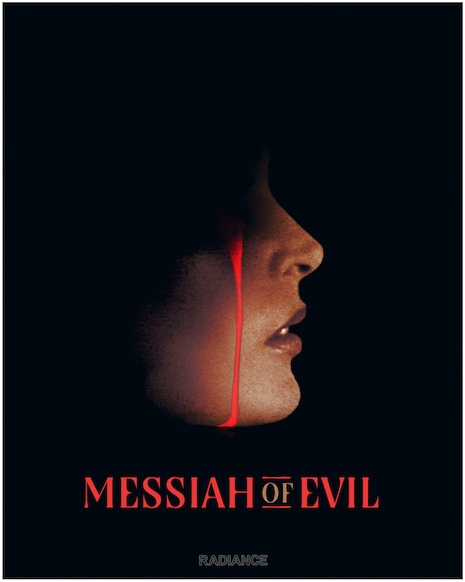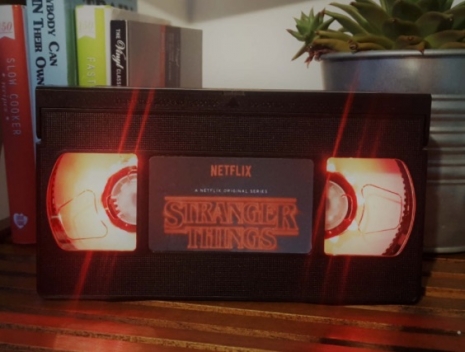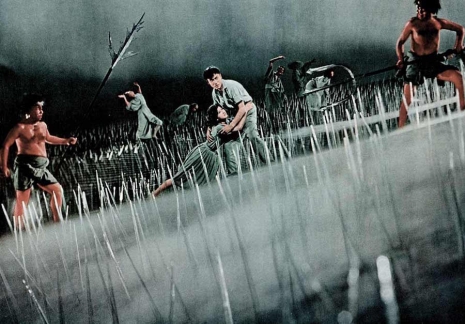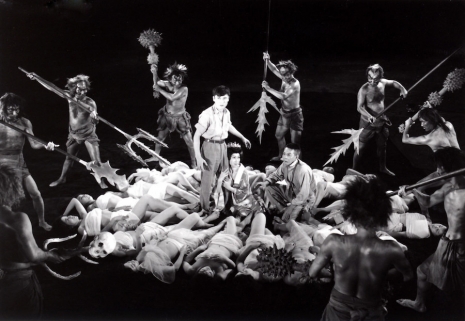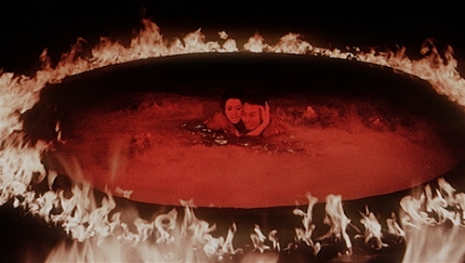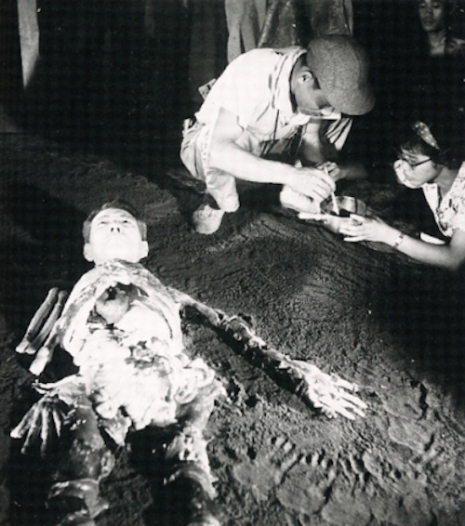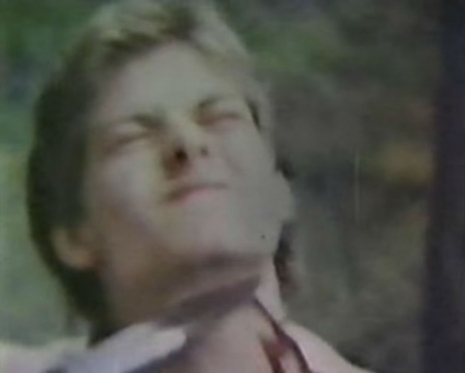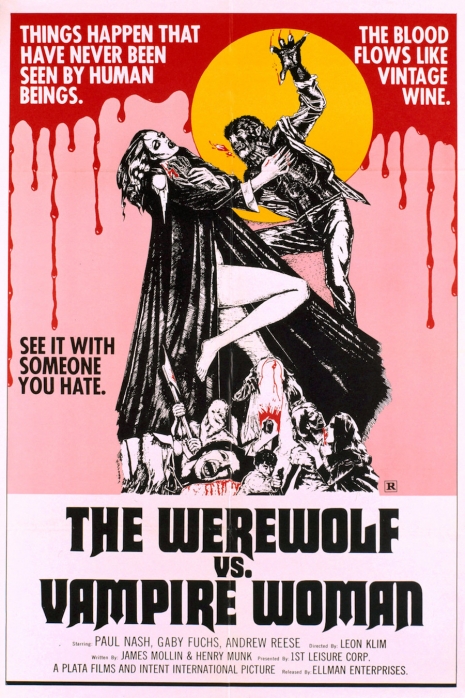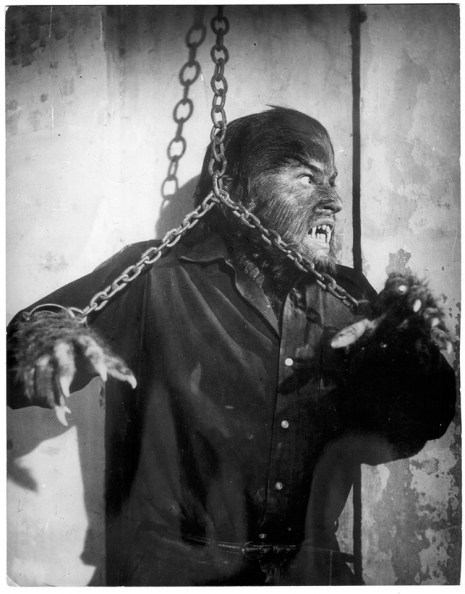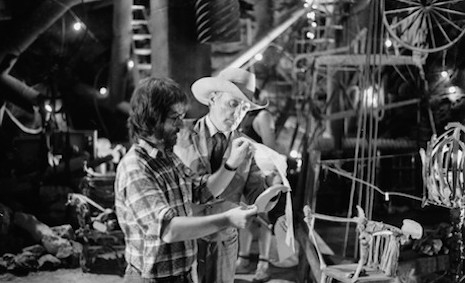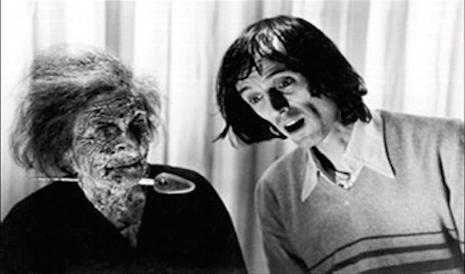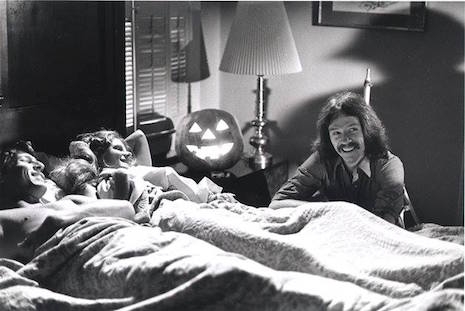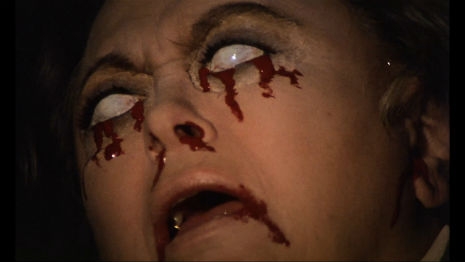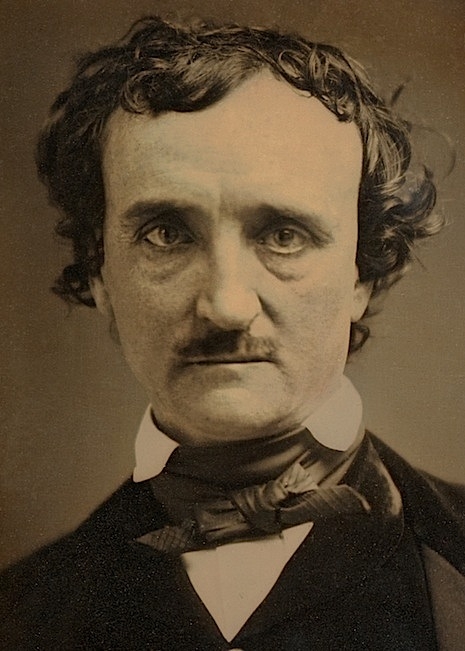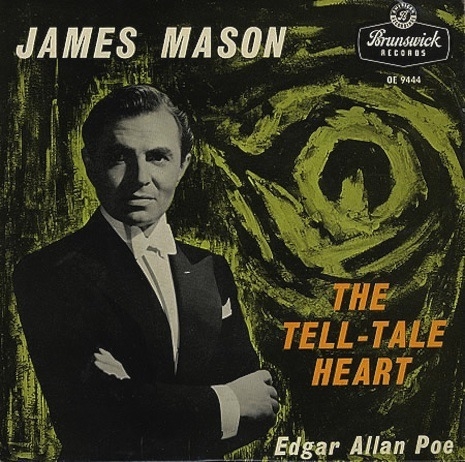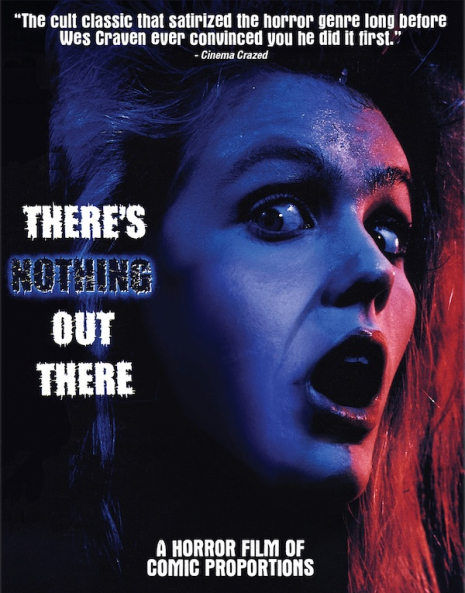
If you’re a horror movie fan, I think you’ll agree with the assessment that Scream (1996) is a top-notch meta horror-comedy. But did you know that it’s been accused of being a rip-off of an earlier film? It’s a motion picture that came out years before, written and directed by a creative filmmaker barely out of his teens. A movie that’s a love letter to horror films, but also plays with the genre’s clichés. Even the film’s title is a reference to a line of dialogue typically said in the run-up to bloodshed in horror pictures.
In the late 1980s, after making a number of short films, writer/director Rolfe Kanefsky penned the screenplay for his first full-length movie—an ambitious meta horror-comedy—in just five days. Soon he was recruiting investors, the final two being his parents, who mortgage their house. In the summer of 1989, with a relatively limited budget of $100,000, the filming of There’s Nothing Out There took place. Kanefsky was 20 years-old.
The film follows a group of high schoolers on spring break who travel to a remote house in the woods. After arriving at their destination, an extraterrestrial monster starts killing off the teens, one by one.
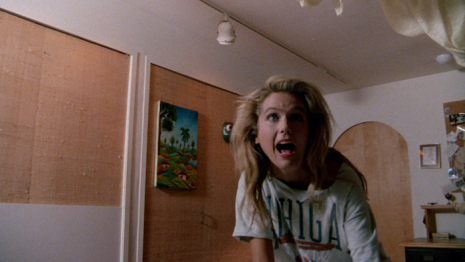
There’s Nothing Out There is a smart and self-aware film, using horror movie tropes and archetypal characters, and then spinning these elements in clever ways that act as commentary on the genre and advance the story. Kanefsky’s writing is impressive, and his direction is solid, as well. I was particularly impressed by a couple of inspired scene transitions.
At times the film is ridiculously silly, which is especially effective when embracing its low budget. Take the slimy alien, a being that resembles something you might see in a cheap sci-fi flick from the ‘50s. A mix of horseshoe crab, frog, and alligator, the creature also evokes the titular monsters in Alien (1979) and Creature From the Black Lagoon (1954), plus a little of Belial from Basket Case (1982).
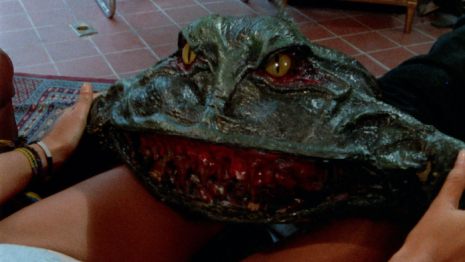
Every so often, the inanimate alien is thrown in front of the camera. In other moments, actors are obviously tussling with it to make it move, like you’d see in an Ed Wood movie. Fun stuff!
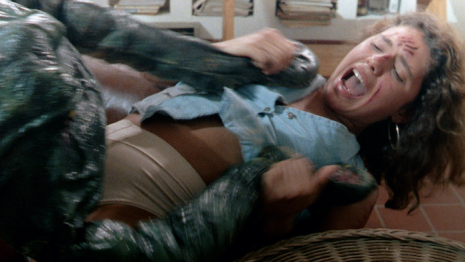
The most noteworthy character in the film is Mike, the horror film fanatic. A kind of stand-in for Kanefsky himself, Mike uses his knowledge to help save himself and others. He knows he’s in a horror movie.
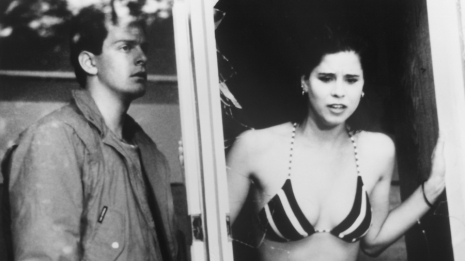
Craig Peck (Mike) and Bonnie Bowers (Stacy) in a production still.
Released in 1990, There’s Nothing Out There was dead on arrival. Horror films had fallen out of favor with audiences, who also weren’t interested in a post-modern horror movie—yet.
Fast-forward a couple of years later: Kanefsky gave a copy of There’s Nothing Out There to a producer, who watched it and dug it. Over a lunch meeting, this producer told Kanefsky that he liked the film so much he was going to show it to his father. The producer’s name is Jonathan Craven; his father is Wes Craven. A few years later, the director’s Scream was released, a critical success that also did gang-busters at the box office.
Intriguingly, there are several similarities between these two meta horror movies. The one most cited is that the character Randy in Scream, who understands all the slasher film rules and uses them to protect himself and others, is very much like Mike in There’s Nothing Out There. The films explore horror movie tropes and archetypes in like-minded ways. Both are a balancing act between scares and laughs.
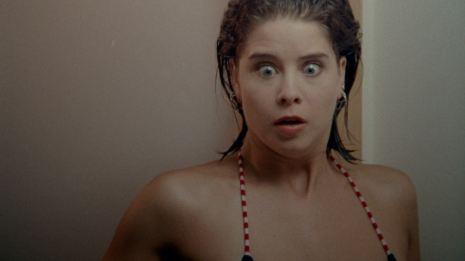
Is there any proof that the makers of Scream “borrowed” from There’s Nothing Out There? In a word: No. It’s possible that Scream screenwriter Kevin Williamson was simply riffing on the same tropes that Kanefsky was. Williamson’s script was written on spec, with Dimension Films buying the rights. It took a while to find a director, and Craven only accepted after Dimension made him an offer he couldn’t refuse. Williamson has said Craven had no interest in changing the script, so the director had no input there.
Scream often gets the credit for being the first motion picture of its type, but as far back as 1981, during the height of the slasher craze, Student Bodies parodied the subgenre. There’s also Return to Horror High (1987), and like There’s Nothing Out There, it’s a smart and funny meta horror-comedy, though I give the edge to Kanefsky’s subsequent work.
Scream has become a lucrative franchise—the 1996 original alone has grossed more than $170 million worldwide—with several sequels and a remake of the first film.
Rolfe Kanefsky, like many fans of his debut feature, has wondered if Scream was based off of his movie, but I see no signs of sour grapes.
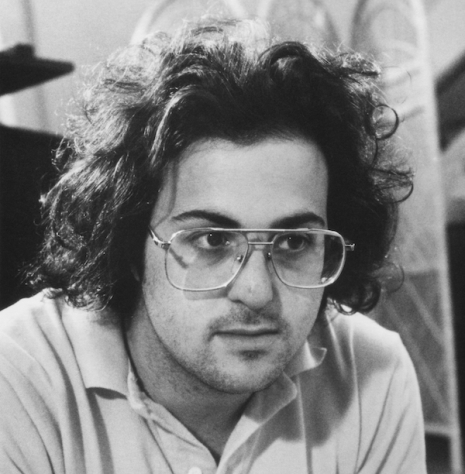
Kanefsky’s a prolific writer/director with many credits under his belt, and he’s still at it (check out his IMDb). He’s written a book about his experience making There’s Nothing Out There, entitled Making Nothing at the Age of 20.
Ronin Flix has recently put out a fresh 2K restoration of There’s Nothing Out There on Blu-ray. The package has several commentary tracks, including a new one with Kanefsky and two of the film’s stars. The two-disc set also contains ten Kanefsky shorts from the early 1980s, including Just Listen, which is seen playing in the opening video store sequence in There’s Nothing Out There. Get all the deets and order the release through the MVD Shop; it’s also on Amazon.
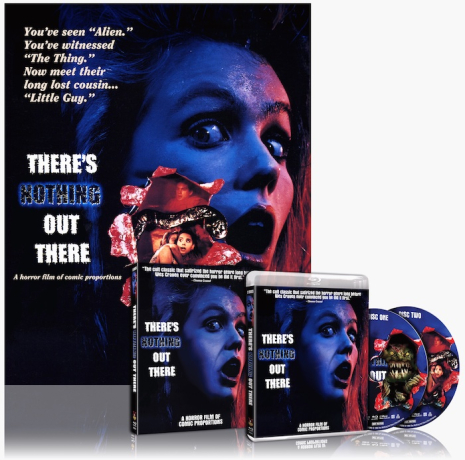
A look at the 2K restoration:
The original trailer:
Previously on Dangerous Minds:
Never before seen outtakes from the outrageous 1982 cult comedy-horror film, ‘Basket Case’
Edgar Wright’s brilliant fake trailer for ‘Don’t’ spoofs exploitation films of the ‘70s & ‘80s
‘Massacre at Central High’: Did this film concerning teen-on-teen violence influence ‘Heathers’?










